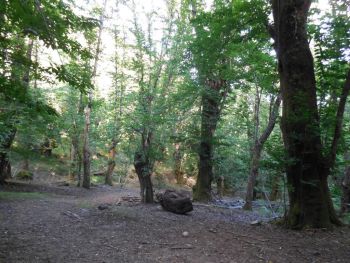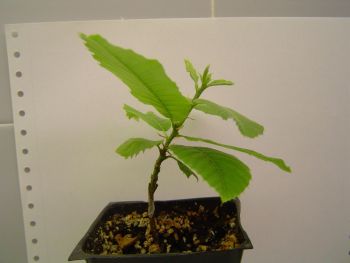25 August 2014

Chesnut trees in O Courel ()Lugo, Galicia, NW Spain
The University of Santiago de Compostela held its first stakeholder meeting at the Estación Científica do Courel (http://www.usc.es/es/servizos/eccourel/) in the ‘O Courel’ area of Galicia in Spain. A key agroforestry system here is chestnut production in traditional chestnut plantations called ‘Soutos’ (Fig 1), often combined with the production of mushroom and honey. The ‘O Courel’ area belongs to the Natura 2000 Network, is a Special Protection Area for birds and is included in a plan to restore grizzly bears to Galicia. Furthermore, the chestnuts produced in this mountainous area are recognized under a Protected Geographical Indication (PGI). These legal protection measures demonstrate the important natural and cultural values of the ‘O Courel’ area.

In vivo micro-grafted chestnut of the high quality chestnut variety ‘Parede’.
The participants at the first stakeholder meeting identified “biodiversity and wildlife habitat” and “rural employment” as the main positive aspects of the agroforestry systems. By contrast, the key negative aspects were identified as “complexity of management”, “difficulty for mechanisation” and “administrative burden“.
One potential innovation, proposed by University of Santiago de Compostela, is the relatively rapid production of high volumes of grafted plants of selected varieties of chestnut using in vivo micrografting. Varieties can be grafted on plantlets from hybrid clones resistant to ’ink disease’ as well as on chestnut seedlings, depending on the risk of infection in the area where the plantations are to be established